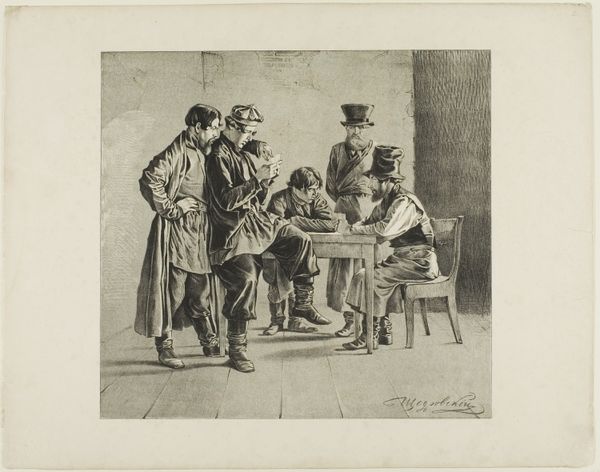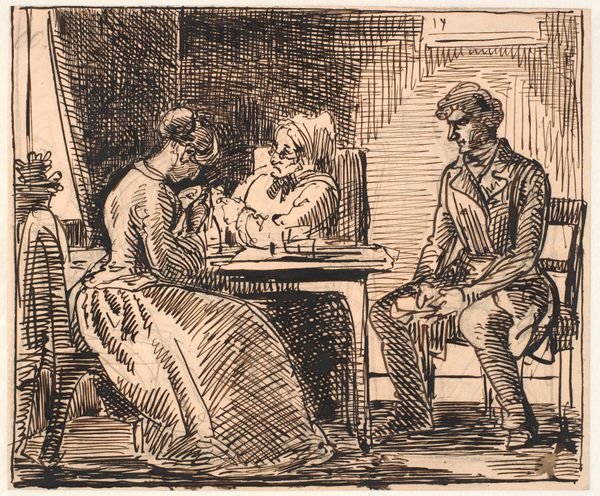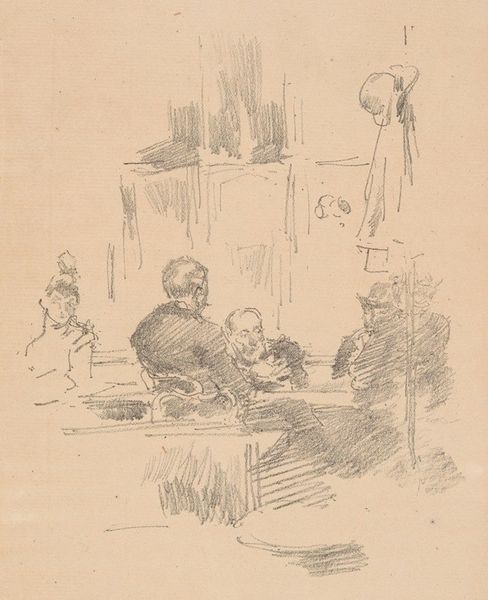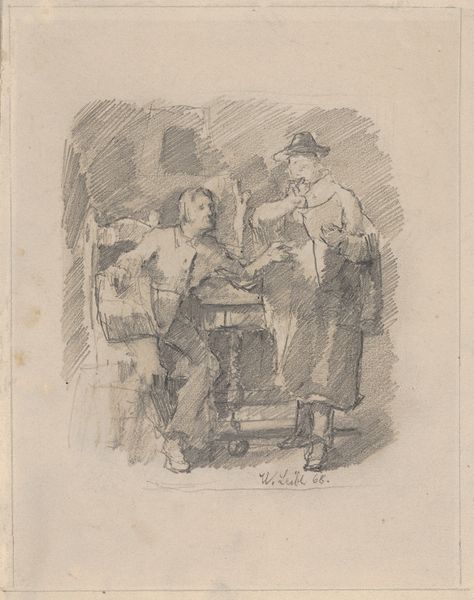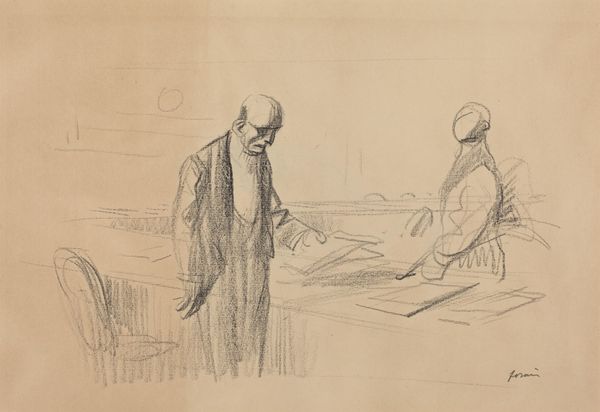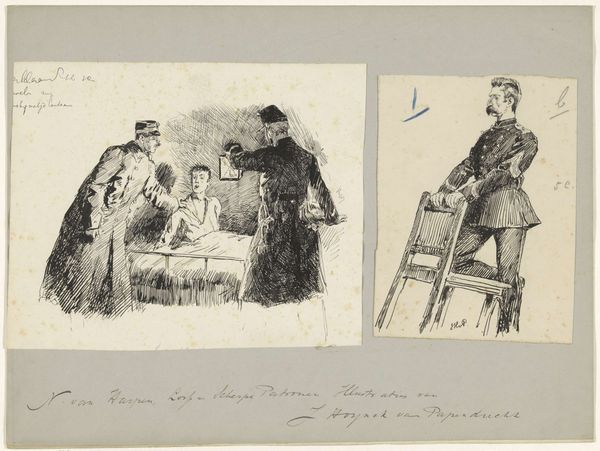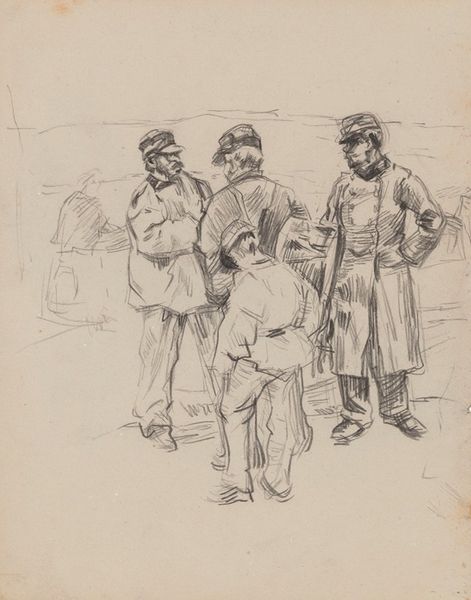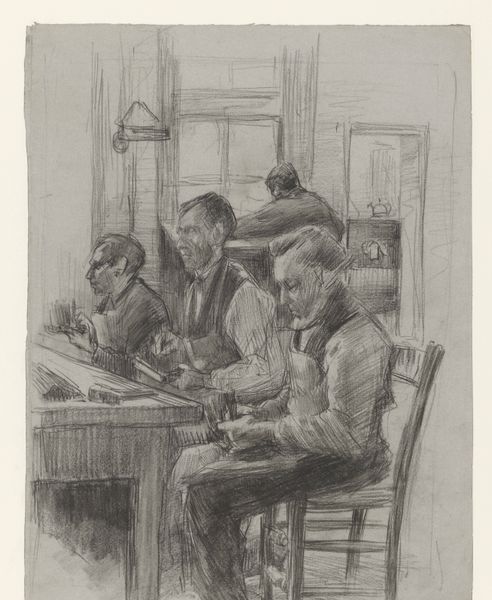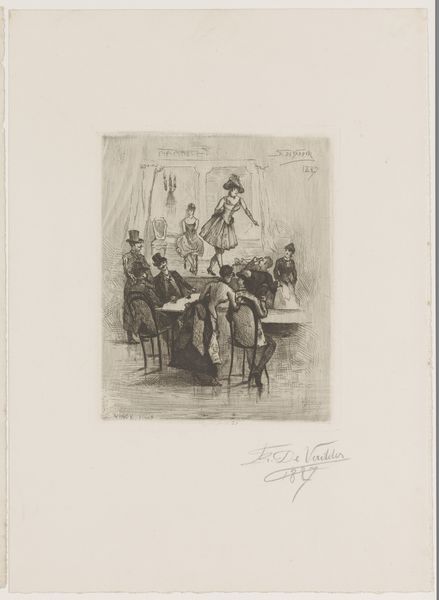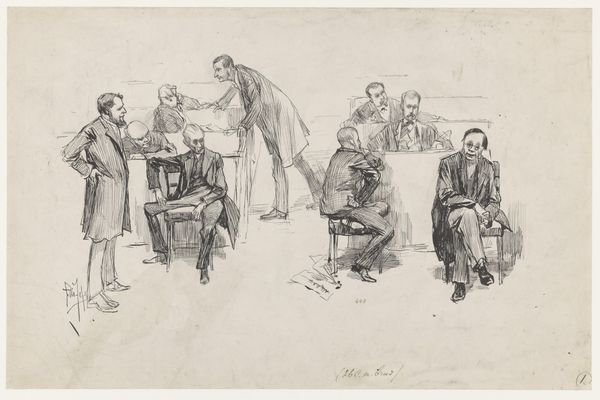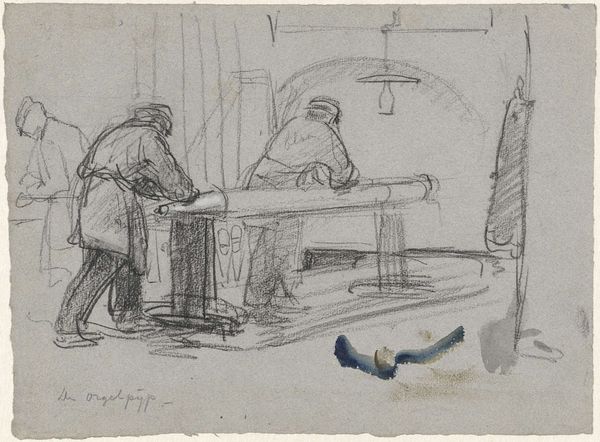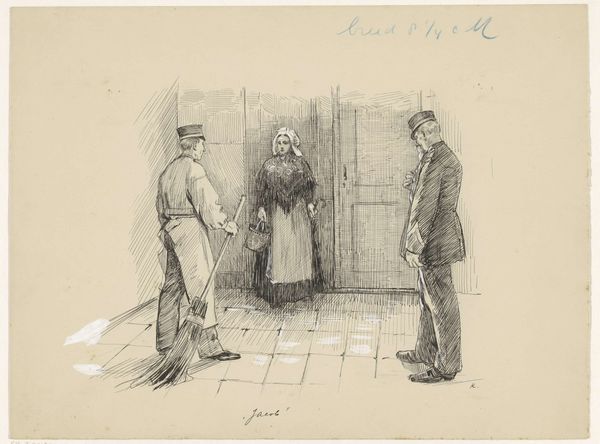
drawing, paper, ink
#
portrait
#
drawing
#
figuration
#
paper
#
ink
#
genre-painting
Dimensions: height 366 mm, width 273 mm
Copyright: Rijks Museum: Open Domain
Editor: Here we have "Three Men Around a Table," a drawing made before 1898 by Heinrich Krabbé, using ink on paper. It gives off a mundane sort of feeling. There’s definitely a class division shown in how the men are dressed, the seated officer most notably. What do you see in this piece? Curator: Immediately, I'm drawn to the means of production. It's an ink drawing on paper, seemingly a quick study. We can consider the labor involved in acquiring the materials – paper manufacturing and the extraction and processing of ink. The varying qualities of both impact the final work, don't you think? What kind of paper was available at the time, and how did its quality influence the artist’s mark making? Editor: That's a cool way to put it. I was more focused on the social aspects, like the hierarchy evident in the composition, but the materiality hadn’t occurred to me. Curator: Well, the social dynamics and class structures are interesting *because* of the materials and their consumption. The availability of paper and ink, and the skills to manipulate them, reflect access to resources and education. A uniform as material culture tells of industrial textile production, does it not? How do the clothes of these men relate to processes of industrialization and their role in it? Editor: I see what you're saying. The materials used and how they're deployed speak to wider systems of power. Curator: Precisely! By examining the physical components of the work, we begin to understand the conditions that allowed its creation. Editor: So, beyond just what’s depicted, it's a document of its own making and the world that produced it. Curator: Exactly! Appreciating it this way opens a deeper connection to both past and present. Editor: I’ll definitely consider materials more actively from now on. Curator: Good. We can often overlook these silent components, when they hold so many stories.
Comments
No comments
Be the first to comment and join the conversation on the ultimate creative platform.
